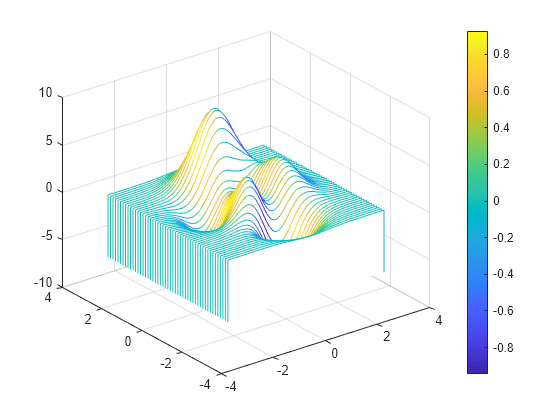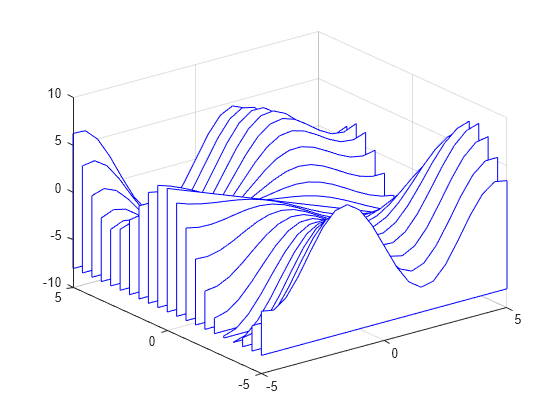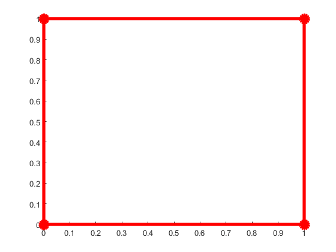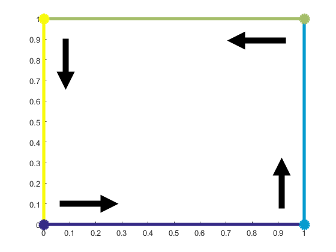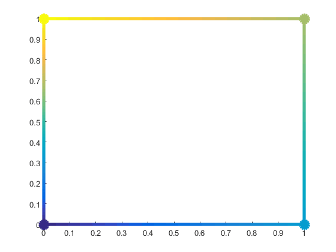waterfall
瀑布图
语法
说明
waterfall( 创建一个瀑布图,并将 Z)Z 中元素的列索引和行索引用作 x 坐标和 y 坐标。
waterfall(___, 使用一个或多个名称-值参量设置瀑布图的属性。例如,您可以指定图边的颜色和粗细。有关属性列表,请参阅 Patch 属性。 (自 R2024b 起)Name=Value)
waterfall( 将图形绘制到 ax,___)ax 指定的坐标区中,而不是当前坐标区中。指定坐标区作为第一个输入参量。此参量可用于上述任一输入语法。
示例
输入参数
名称-值参数
提示
要以列(而不是行)形式分析数据,请调用带转置参量的
waterfall:[X,Y] = meshgrid(-3:.125:3); Z = peaks(X,Y); waterfall(X',Y',Z')
要创建网格曲面对象而不是补片对象,请使用
meshz函数。要创建类似瀑布图的图,请将曲面的MeshStyle属性设置为'Row'。
算法
坐标区的
XLim、YLim和ZLim属性存储 x、y 和 z 轴的范围。这些范围基于X、Y和Z输入参量的范围。坐标区的
CLim属性确定颜色在C范围内的分布。有关详细信息,请参阅控制颜色图范围。


